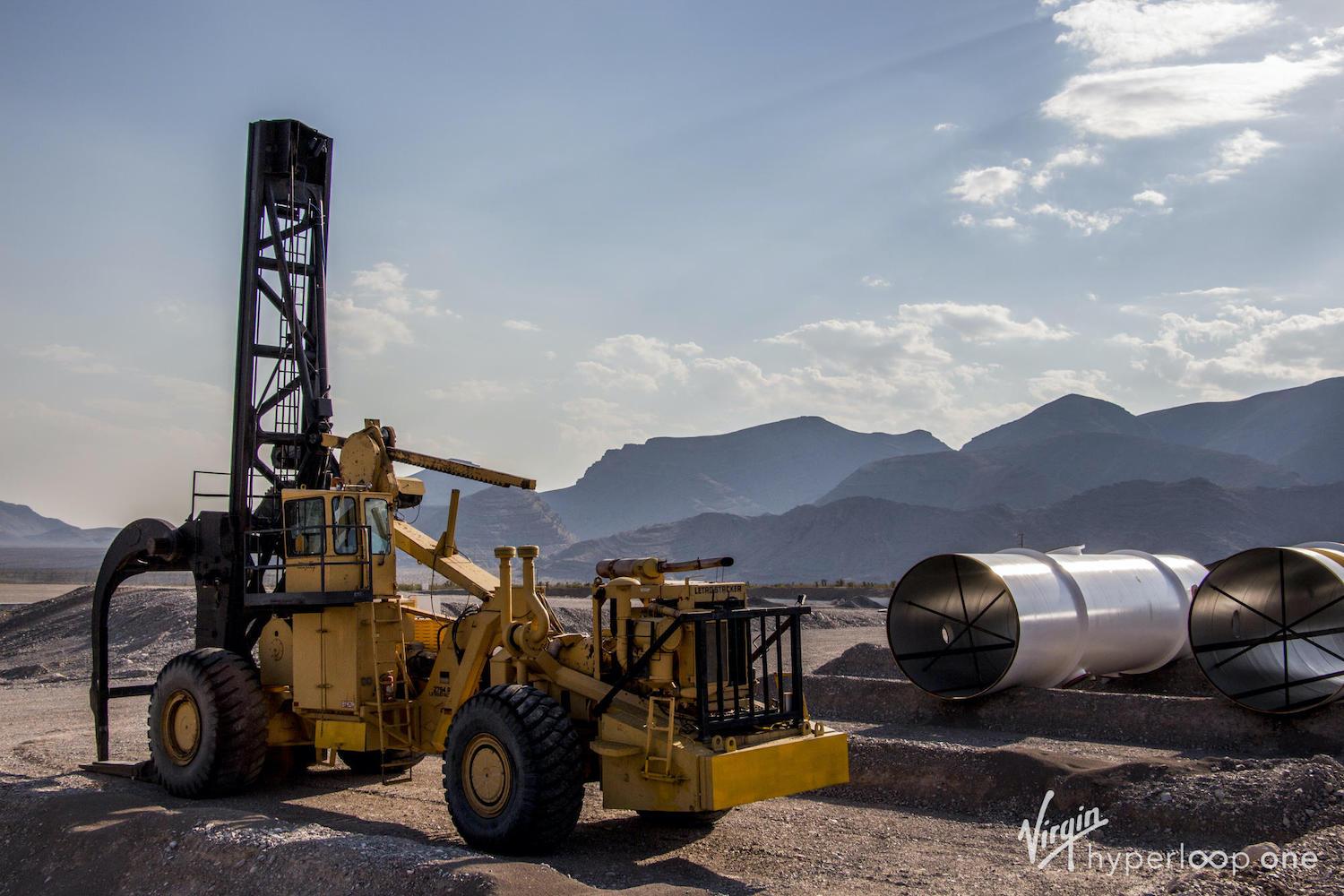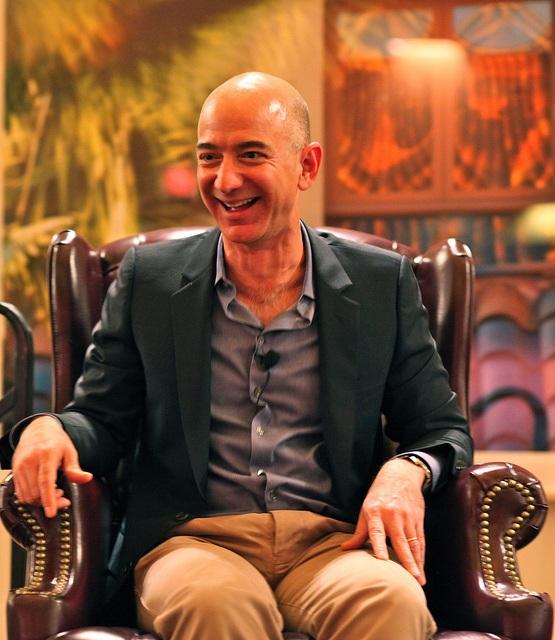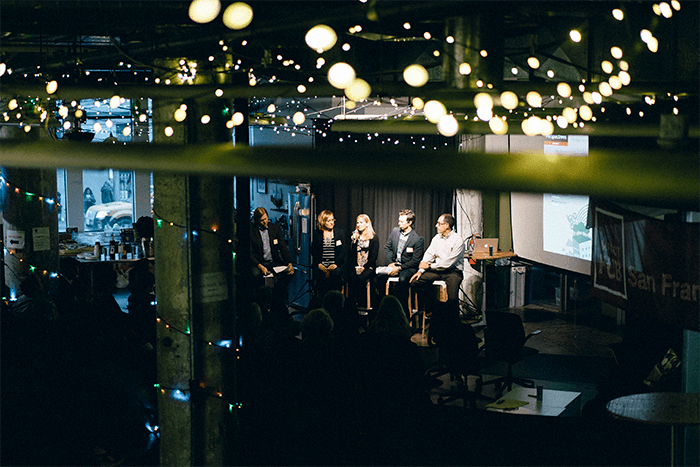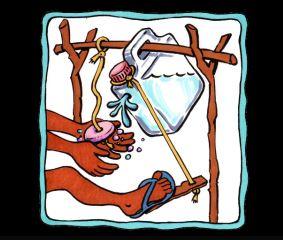Mums behind the UK’s small businesses are a powerful economic force


by Sangeeta Haindl — Do you know much about the “Mumpreneur” economy? These are businesses run by mothers with children under 18, which generated a staggering, £7.2bn for the U.K. economy in 2014 supporting over 200,000 jobs! Now this figure is set to rise to £9.5bn by 2025, according to research by EBay. Mums behind the nation's small businesses are becoming a powerful economic force in the U.K. Being able to run a business alongside bringing up children could be deemed a perfect job, giving more of a flexible approach to working life. Especially, as so often that statistics are reeled out for the low numbers of women in the boardrooms - but how frequently is it considered that those women absent at the top of the corporate ladder are, in fact, running their very own successful businesses from the kitchen table.
Case studies show that most Mumpreneurs had successful careers before having children, but decided to not go back to the rat race, with the gender pay gap at 14 percent more for men, according to the Office of National Statistics. The most popular business sectors for entrepreneurial mothers’ range from retail to entertainment to management consultancy to care home management. These Mumpreneurs have been responsible for creating some of the most famous brands in British business, from the White Company to Jo Malone and Ultimo underwear.
However, to start up a business requires drive and tenacity; which is why NatWest is lending its iconic purple branded bus to the ‘Mumpreneurs Networking Club’ as they do a whistle stop tour of four U.K. locations starting on 16 May in Guildford; 17 May in Kingston; 25 May in Brighton; and ending on 26 May in Portsmouth. This bus tour aims to inspire more mothers to start their own businesses.
Each tour runs from 10am to 4pm, with a jam-packed agenda covering all aspects of running a business, with mumpreneur advisors giving free sessions from marketing to accountancy, public relations, vlogging, branding, networking, social media to personal styling, business life coaching and more. This Mumpreneurs Networking Club Bus Tour, sponsored by DotUK, will showcase some excellent examples of successful Mumpreneurs. The Mumpreneurs Networking Club gets an audience over 17,000 visits to their events; their mission is to connect, inspire and engage mumpreneurs across the U.K.
Improved connectivity and growing digital literacy is enabling ambitious, business-minded mums to realise and pursue successful enterprises. These entrepreneurial businesswomen are building impressive companies, creating both wealth and jobs while also fulfilling one of the most demanding roles of all – being a mum! Yet, while more women around the world are interested in becoming entrepreneurs than ever before, the number of women who turn aspiration into reality is still low. Now, this bus tour will give people the tools to prompt those thinking about taking the plunge into the self-employed life to take action.
Photo Credit: Mumpreneurs Networking Club
Source: Justmeans
Hyperloop One Completes First Public Test


Construction on the California High Speed Rail is underway in the San Joaquin Valley, but critics point -- among many things -- to the project’s cost.
Elon Musk, of PayPal, Tesla Motors, SolarCity and SpaceX fame, has promoted an alternative: the Hyperloop. In this system, pressurized capsules would zoom through tubes thanks to air cushions powered by air compressors and linear induction motors at travelers’ schedules, not according to times dictated by a transportation agency.
Earlier this week, one of the companies working on the development of Hyperloop technologies ran its first public test in the southern Nevada desert, 30 miles outside Las Vegas. According to Shervin Pishevar, a cofounder of Hyperloop One, a 1,500-pound metal sled was able to shoot across a track 300 meters (320 yards) long, accelerating from zero to 60 miles per hour in 1.1 seconds.
The test only lasted a few seconds before ending in a massive plume of sand. But, according to Pishevar and other advocates of Hyperloop systems, this is a technology on the rise that could leave conventional means of transport such as rail in a cloud of dust.
In an ideal world, the Hyperloop would be a carbon-free, on-demand transport system whisking passengers between Los Angeles and the San Francisco Bay Area in as quickly as 30 to 35 minutes. These pods could depart as frequently as 10 seconds apart, avoiding clunky schedules, irritating delays and the reliance on fossil fuels while further connecting the world.
The potential of this technology is what has fueled the growth and excitement at Hyperloop One (formerly Hyperloop Technologies), which has secured millions in capital funding. TransPod, located in Toronto, and California-based Hyperloop Transportation Technologies (HTT) are also working on similar systems in trying to fulfill Musk’s vision.
Time will tell if Hyperloop technology will actually succeed, or if the engineers and developers working within these startups are drinking the Kool-Aid. The excitement that many have for the Hyperloop is its speed and technology, but if these companies succeed, this is what we should all really be excited about: its relatively low cost.
Many have scoffed at Musk’s suggestion that the Hyperloop can be completed in California at a cost of $6 billion. But even if those costs double, or even triple, that is still a much lower price than California’s high speed rail project. And the Hyperloop would become more cost-effective as more regions in the U.S., and countries worldwide, adopt the technology.
The fact is that while many public-advocacy groups such as the American Public Transportation Association love to issue studies about how to improve commuting within and between our cities, they never address why these systems are so expensive to build in the U.S.
Part of the problem is that, once the leader in rail, the U.S. largely gave up on trains in favor of highways in the 1950s, so this country lacks the knowledge and capacity compared to East Asia and Europe. In California, building anything requires cooperation between federal, state, county, city and other agencies, slowing the process and adding additional costs.
But even in expensive Western Europe and Japan, public transportation projects are built faster and at a fraction of the cost compared to what is built slowly in the U.S. -- and we cannot just blame labor unions or greedy contractors.
The Hyperloop, arguably, is a story analogous to what led to the rise of ridesharing services such as Uber and Lyft: Transportation systems as they are set up now are not working efficiently for most citizens, so we are looking for an alternative. And if the Hyperloop can succeed, look for another revolution in transportation that people will embrace while politicians and the special interests they represent cringe.
Image credit: Hyperloop One
'Dump Trump' Members Pressure Amazon to Stop Selling 'Sexist-Promoted' Products


Mexico's former president, Vicente Fox, isn't the only one who is tossing aside the Trump neck ties as a sign of opposition to his confusing political platform. Members of the women's rights organization Ultraviolet, which uses its lobbying powers to combat sexism, have now jumped into the fray. And they found a powerful, persuasive megaphone for their message: Amazon shareholders.
More than 1,000 Amazon shareholders have banded together to tell the company's founder and chief executive, Jeff Bezos, that they aren't happy with Trump's recent comments about women. In an online petition, the group called for Bezos to drop Trump's men's clothing line to show that Amazon doesn't support his controversial comments about women.
That call has resonated with Amazon customers. As of Wednesday, The Street reports, more than 13,000 Amazon customers, including 5,000 Amazon Prime users, signed an Ultraviolet Action petition tailored to consumers, calling for Bezos to "sever [Amazon's] ties with Trump, and stop profiting off of his brand of hate."
If Amazon does decide to suspend its business with Trump, it won't be alone. Last year a host of media organizations announced that they would sever ties with the Trump label. The list includes Univision, which was sued by Trump (the two parties settled in February); Televisa, which said the presidential candidate "hasn't demonstrated understanding or respect of Mexican migrants and has offended the entire Mexican population;" and NBCUniversal, the network that once aired "The Apprentice," Trump's path to TV fame. Macy's and Serta have also severed ties, the former of which citied "disgusting and offensive" comments as a reason for the decision.
The issue may be a bit more complicated for Bezos, however. In February, Trump challenged Bezos for his purchase of the Washington Post in 2013.
"I have respect for Jeff Bezos, but he bought the Washington Post to have political influence, and I gotta tell you, we have a different country than we used to have," Trump said in a speech last year. He alluded that a successful win as president would be bad news for the independent retailer's business. "They will have such problems," said Trump, who was upset by the Post's lengthy and repeated coverage of his campaign.
Of course, going after Amazon and its founder would be a bit like shooting himself in the foot, since the men's online retail sector has been growing even faster than women's in recent years. According to stats published by Business Insider in 2012, men's online purchases -- which include clothes -- had risen by 13 percent, compared to women's at 10 percent. That's backed up by 2014 Business Insider Intelligence statistics, which suggest that 40 percent of men ages 18 to 34 would be willing, if possible, to ditch the shopping mall completely and buy "everything online."
Until Bezos makes up his mind as to whether to take on The Donald, Amazon will continue to profit from his product line. Given Trump's current standing as the Republican contender for the White House, coupled with his controversial public image, Bezos may be weighing that choice very carefully. As CNN political correspondent and former Obama aide Van Jones noted, controversy draws curiosity in today's media. And curiosity sells business.
Images: 1) Flickr/Scott Lewis; 2) Ultraviolet; 3) Flickr/Steve Jurvetson
No Olympic CSR Medals This Year: Companies Avoid Rio 2016


The stunning emergence of Brazil on the world scene has led many of us to praise this Latin American giant for its success in tackling poverty, its transformation from food importer to food exporter, and its growing industrial might thanks to business centers such as São Paulo and Porto Alegre. In fact, I predicted the 2010s would be the “Brazilian Decade,” and at a superficial level, the awarding of the 2014 World Cup to Brazil and 2016 Summer Olympics to Rio de Janeiro appeared to confirm this nation of 200 million people had become a leading global power.
But Brazil has fallen hard and fast. The 2014 World Cup fomented a cauldron of protests instead of becoming a focal point of national pride, and not just because of the country’s humiliating loss to Germany in the semi-finals. Many of the venues, the costs of which soared way over budget, are now underused. Many citizens in soccer-obsessed Brazil wondered why so much money was spent on sporting facilities when public services declined in quality yet increased in cost.
Meanwhile, the country is suffering through its worst recession since the 1930s, the Zika virus outbreak has terrified Brazilians and foreigners alike, and its capital, Brasília, is embroiled in an impeachment scandal. Now one of the country’s most revered soccer players, Rivaldo Ferreira, has urged visitors to stay away from Brazil during the upcoming Olympics.
Many corporations, however, are already steering clear of Brazil in the countdown to this year’s Olympics, which is a lost opportunity for companies seeking a platform to showcase their corporate responsibility agendas — and actually do some good in a country that, in the most optimistic terms, can be described as struggling.
This is quite a difference from the 2012 Summer Olympics in London, which despite mixed reviews arguably made up the most sustainable mega-event to date (though some would say the 1994 Lillehammer Olympics were far more sustainable and responsible). Some hiccups occurred, such as McDonald’s about-face on committing to local food sourcing, and London’s organizing committee gave up on clean energy targets. But sustainability was a key focus from when London won the bid in 2005 to the closing ceremony at its Olympic stadium, and continued to be one of the event's largest directives up to when the Olympic torch was extinguished. And London’s venues have proven to be more useful than the white elephants in other cities that have hosted the games.
Rio de Janeiro’s Olympic games organizing committee, however, is emphasizing transparency -- which is hardly surprising since Transparency International ranks Brazil’s corruption in line with nations such as Bosnia, Burkina Faso and Tunisia. Brazilians, already skittish over the cost of the World Cup and the public sector’s reputation for profligate spending, have a right to be worried. Construction lagged as costs skyrocketed, and one news outlet reported that national spending on the Olympics is anywhere from 16 to 25 times higher than what Brazil is spending to fight the Zika health crisis.
Other problems, including the race to complete supporting infrastructure on time, are also bedeviling officials tasked with ensuring the Rio de Janeiro games go smoothly. Ordinary citizens, including those who lost their homes to make way for the Olympic park, have also suffered as Brazil tries to put on an impressive show for the first Olympics hosted in South America.
Finally, Rio de Janeiro has a massive trash and sewage problem, evident in Guanabara Bay, where Olympic sailing events will be held in the shadow of the city’s Corvocado and famous Christ the Redeemer Statue — but the bay is strewn with garbage and dead fish in a repeated embarrassment for the Rio games’ organizers.
Most massive events like the Olympics invoke hand-wringing as the opening ceremony nears, and Rio’s challenges are actually an opportunity for many of the world’s largest companies to leverage their expertise and work with the city to put on a successful Olympics. But unlike London, many corporations are keeping Rio 2016 at more than an arm’s length in an apparent effort to avoid close association with the games.
One company, Dow, has publicized some of its activities, such as “sustainable agriculture” and the reuse of a stadium wrap used in London for this year’s games. The company is also Rio 2016’s official “carbon partner,” though partnership is a pretty generous term as the organizing committee has kept its sustainability efforts relegated to a report long on generalities and the mention of a few catchy statistics.
Nevertheless, amongst the Olympics’ usual core sponsors, such as Coca-Cola and consumer packaged goods companies including P&G, not one company is working with the games to ensure there is some social and environmental value. And that is partly because companies do not want to take the risk of being too closely associated with an event that could descend into chaos, which is unfortunate as many Cariocas and Brazilians outside of Rio could benefit from these companies that are usually quick to jump at such occasions to show that they are “doing good.”
Image credit: Around the Rings 1992/Flickr
Darden Accused of Stiffing Employees with Payroll Cards


It's been a rough go for Darden Restaurants these past few years. Declining sales led to a proxy fight that ended with a new board of directors for the company. At that time, Darden sold its lucrative Red Lobster chain to another company and embarked on a bevy of cost-cutting moves. Some of the company’s moves smack of desperation: As noted in a Bloomberg report, the company has shampooed its restaurants’ carpets less frequently to save money.
Although Darden once enjoyed a solid reputation as one of the more responsible and sustainable restaurant chains in the industry, it has recently come under attack by several nonprofit organizations that say its environmental stewardship needs far more improvement.
And now the company, which owns the popular Olive Garden chain, has been accused of ramping up more cost-cutting measures on the backs of its employees.
According to a new report issued by Restaurant Opportunities Centers United, Darden saved over $5 million a year by shifting many of its employees from standard paycheck services to payroll cards. The result, according to many workers, is a financial windfall for banks while employees are stuck with a smaller paycheck.
Payroll cards have become a popular way to compensate employees, especially hourly wage earners, who are often unbanked. Visa and payroll services such as ADP have seized upon these services, with the argument that such payments are secure and offer employees access to their money immediately. Some writers insist that they are a better financial option for employees than having to cash checks at expensive and predatory check-cashing services.
But as anyone who has received a gift card with a Visa or other credit card logo on it knows, there is plenty of fine print to read and remember -- or the $100 on that plastic card can disappear. According to a joint report funded by the Social Initiatives Foundation, The Moriah Fund and the Discount Foundation, several problems have contributed to what Darden employees describe as their wages being consumed by bank fees:
- Almost a quarter of Darden employees say they were not given instructions on how to use their company’s payroll cards.
- 42 percent said they had problems accessing their wages via their payroll cards.
- Over 75 percent of employees surveyed said they paid fees to access their wages at ATM machines, while many complained about withdrawal limits.
- 63 percent said they were not told about the fees these cards can incur before a payroll card was issued to them; and almost half said they had no access to ATMs that do not charge them a fee to access their wages.
- And the statistic to which Darden really needs an answer: 26 percent of Darden employees said they were told there was no alternative to the Darden payroll card.
These complaints by labor activists only add to Darden’s woeful reputation as an employer, one that dives into public-relations missives about being a good corporate citizen while many of its workers seek public assistance to supplement their wages.
[Ed. Note: Darden reached out to us via Twitter share that they are "committed to serving responsibly-sourced food, supporting employees & the environment." and included a link to their citizenship report: http://bit.ly/1XiVDOp]
As many as 7.4 million people receive wages via payroll cards, the fees of which can push workers’ hourly wages to less than the federal minimum wage. This is the perfect example of how the road to hell is paved with good intentions, as paying employees in cash or having them rely on check-cashing services are not the best ideas, either. But as these cards benefit the bottom line of banks and companies such as Darden at the expense of workers, more states are looking into regulating this form of payment.
The state of Washington — which, incidentally, offers a Visa payroll card as an option for employees — is mulling legislation that would restrict the fees that these cards can charge. The banks and their lobbyists, however, will do everything to prevent that law from passing.
One problem with wages, how they are paid, and the fees they involve is structural. The U.S. is a dinosaur when it comes to financial transactions. Ask many Americans if they have a PayPal account, for example, and the response may very well be, “No, I just email him now.” Chip cards, which have long been the norm in Europe, are now standard issue here, but many merchants here are loath to update their systems as they complain about the cost. Mobile payment systems such as those available by Android or Apple have gained some traction, and therein lies a potential solution: Mobile technology can help solve this problem cheaply and effectively.
Mobile banking has become standard in Africa, so why not here? Banks, as well as companies such as Darden, love to talk about how socially responsible they are. Mobile banking could offer a cost-effective way to allow workers to become part of the banking system.
Image credit: Marlon E/Flickr
CSR Perspectives: How to Innovate with Purpose


Would you like to join us at our next CSR Perspectives event in San Francisco? Details will be announced this summer but you can register your interest here.
By Tyler Wagner https://player.vimeo.com/video/166072070 On Tuesday, May 3, a great crowd joined us at the Impact Hub in San Francisco for the second installment of #CSRperspectives, a series of interactive audience/panel conversations about the future of corporate responsibility and sustainability. Our discussion this month focused on “Innovating With Purpose,” and looked closely at the ways companies are leveraging sustainability to fuel innovation – both by developing new products and solutions and by looking for innovative ways to address social and environmental challenges. Guided by moderator Jeff Sutton (@JeffGSutton), the discussion flowed freely and included insights from Bruce Klafter (@chicagoBK) of Flex, Jill Stoneberg (@JillStoneberg) of Avaya, Elena Avesani (@Elena_Avesani) of Oracle, and Nick Aster (@NickAster) of TriplePundit. In case you missed it, here are three key takeaways from the discussion:1. Capitalize on customer interest
Avaya’s products include a variety of teleconferencing and cloud offerings. The company’s sales and marketing teams have seen how sustainability is becoming a consideration in customers’ purchasing decisions. Customers are increasingly curious about environmental impacts – and this curiosity does not stop at understanding the footprint of Avaya’s technologies. Customers also want to understand how use of Avaya’s technologies can help them reduce environmental impacts in other areas of their business. That realization on its own isn’t particularly innovative or revolutionary. After all, sustainability has long been a consideration in purchasing or procurement decisions. What is innovative is how Avaya has chosen to act on that information. Avaya’s sales and marketing teams began by reaching out to the sustainability team – including Jill Stoneberg, sustainability manager – to find ways to more meaningfully integrate sustainability into sales and marketing materials. But they did not stop there. Avaya feels so strongly about the value of sustainability for sales and marketing that the company is actually having conversations about the possibility of setting (get ready for this) revenue targets for the sustainability team. Tying sustainability to sales isn’t an easy undertaking, and Avaya is only in the early stages of this discussion. But if the company can pull it off, this kind of innovative thinking would certainly help to take the guesswork out of measuring ROI for sustainability.2. Explore innovative economic models
In the fast-paced world of electronics and hardware, Flex’s business is constantly evolving to meet the needs of customers. Bruce Klafter, Flex’s VP of corporate social and environmental responsibility, talked about the value of innovative economic models (such as the circular economy) that allow for companies like Flex to better serve their customers while also advancing their own sustainability agenda. Customers that rely on suppliers in the early stages of their value-chain – in Flex’s case, for the design and manufacturing of electronic devices and hardware – are increasingly recognizing opportunities for meaningful engagement with those same suppliers at the end of a product’s lifecycle: for recycling and repurposing of parts and products. Suppliers like Flex have intimate knowledge of production processes, materials and (most critically) their alternatives, so they can help customers more fully consider downstream impacts. This puts Flex in a position where it can help customers make choices that increase the utility of their products at end-of-life. This approach helps businesses move from a traditional linear product lifecycle to a circular model. All of this activity grows Flex’s service offering, while enabling the company to make progress toward its own social and environmental goals. It’s a true win for all parties involved, and a great example of innovation driven by sustainability.3) Recognize sustainability as an opportunity for added value
At many companies, sustainability sits somewhere in the middle of the corporate org chart, reporting up through EHS (environmental health and safety), or -- as is often the case with CSR or citizenship teams -- as a function of human resources. But not at Oracle. Elena Avesani, principal strategy manager for sustainability at Oracle, and her counterparts in sustainability are embedded directly in the company’s products and solutions teams. As Elena described, this unique organizational structure is driven in large part by the company’s desire to leverage sustainability as a means to add value to existing products and solutions. In other words, Oracle has recognized that customers interest in sustainability represents a significant business opportunity. In some cases, these opportunities are identified by customers themselves. Customers have asked Oracle to bake additional functionality into its enterprise software – such as the ability to better manage data on energy use, water, emissions, etc. In other cases, Oracle’s internal teams identify opportunities and then enlist internal departments or teams for pilot projects before flipping the switch and offering additional functionality to customers. In either case, Oracle has recognized that, by integrating this kind of functionality into the platforms and applications that its customers already use, the company can increase the value of those applications to its users. Such features add value and differentiate Oracle’s product offering from competitors.Opportunities to innovate are everywhere
The consensus among the group was clear: Interest in sustainability extends far beyond the sustainability team – and interest is growing. With this interest come opportunity – not only to develop new products, solutions and technologies, but also to challenge traditional business models and change the way we measure sustainability’s value. How is sustainability driving innovation at your company? Let us know in the comments, and we hope to see you at our next #CSRperspectives event. Images and video courtesy of thinkPARALLAX Tyler Wagner is an Account Strategist at thinkPARALLAX, a sustainability communications consultancy dedicated to building brands with purpose. Would you like to join us at our next CSR Perspectives event in San Francisco? Details will be announced this summer but you can register your interest here.Low-Tech Design Can Fuel the Sustainable Development Goals


By Dylan Lunney
“Give a person a fish and you feed them for a day; teach a person to fish and you feed them for a lifetime.”
Low-tech, scalable, local solutions present an exciting opportunity to address the poverty-ending objectives within the United Nations' Sustainable Development Goals for 2030. In order for development projects to be successful and sustainable, communities should not be bystanders in projects that are designed to help them. Solutions addressing the challenges of people living in poverty should be designed by carefully examining and accounting for the needs, practices, and available resources of the end-user.
This seems like a basic, self-evident concept, but the history of development projects demonstrates otherwise.
Take, for instance, that the cumulative cost of failed water systems in sub-Saharan Africa alone is estimated to be $1.2 billion to $1.5 billion from 1987-2007. The posterchild of this development design failure is the PlayPump, a once highly-touted safe drinking water ‘solution’ that quickly failed when it turned out that kids would have to ‘play’ for 27 hours a day to filter the intended amount of water.
Development projects that fail to incorporate the needs, skills, habits and resources of the end-user don’t produce their intended result, in this instance providing safe drinking water. And they are an enormous waste of money, time and resources. Instead, beneficiaries should be involved in identifying the technology and approach that will benefit them most, and the community should be directly involved in the building and maintaining of their local infrastructure.
Low-tech, high-thinking
OHorizons, where I work, is part of this appropriate design movement in global development. We call our design process "low-tech, high-thinking."A lot of attention is given to the newest app or high-tech gadget. You’ve probably heard of Bill Gates' highly-celebrated machine that turns human waste into water. It’s impressive. It’s also impractical for most poor, rural communities, where the water and sanitation crisis is particularly dire. Residents in such communities likely don’t have the infrastructure or funds to build or maintain this $1.5 million facility that is roughly the size of two school buses.
The core belief behind the low-tech, high-thinking movement is that it takes just as much creativity and ingenuity to create affordable, simple solutions that can have a meaningful impact on a global scale. Understanding the systemic underlying causes along with listening to and learning from the end-user, is a vital part of this design process. Adhering to the following principles can also help guide this process and ensure a solution is truly centered around the beneficiary and the environment in which they live.
Low-tech principles
Simple: Anyone, regardless of education level or expertise, should be able to develop and implement a solution with minimal instruction.Low-cost: The solution should be affordable to the end-user.
Locally-sourced: 100 percent of the materials, tools and labor should be available locally.
Flexible: Every community is different and has different resources available to them; solutions should be flexible enough to adapt to varying local conditions.
Open-source: Solutions should be freely available to anyone who would like to utilize them.
In-the-field examples
OHorizons has used this approach to engineer a Wood Mold for the production of concrete BioSand Filters (BSFs). We made our step-by-step construction manual open-source so that local organizations can manufacture BSFs for a fraction of the upfront costs of traditional methods. This innovation means more people can get safe drinking water access at an exponentially faster rate.
BioSand Filters (BSFs) are a fascinating low-tech, household appliance that use sand, gravel and natural biological processes to filter pathogens out of water, making it safe for drinking. Click here to learn more and to check out our free construction manual.
https://www.youtube.com/watch?v=NpTud-LjCNA&feature=youtu.be
Many other fantastic household-level solutions follow similar design parameters. Two of my favorites are the Tippy Tap for hand-washing and the Liter of Light for indoor lighting without electricity. These solutions are open-source so anyone, anywhere can build them and improve their community.
The Tippy Tap is a hands-free way to wash your hands and is especially appropriate for rural areas where there is no running water. It is operated by a foot lever and thus reduces the chance for bacteria transmission as the user touches only the soap. They’re also very easy to build and can be made with basic, low-cost materials.
Liter of Light has a 17-minute video on its website that walks you through how to build your own eco-friendly bottle light. These light bulbs, which are made from an old plastic bottle filled with water and chlorine, are illuminating homes in communities living without electricity. They’re inexpensive, easy to make, and powerful enough to light up a windowless room.
Conclusion
As the world continues to focus on ways to effectively eliminate global poverty and the framework that sustains it, one area to think seriously about investing in is low-tech, human-centered design projects that transform beneficiaries into local change makers.
Harnessing the power of people through low-tech, high-thinking design has amazing potential to help the world realize the Sustainable Development Goals.
Image credits: 1) OHorizons 2) Tippy Tap
Dylan Lunney is the Director of Communications for the nonprofit OHorizons. Dylan holds a B.A. in Political Science from the University of Wisconsin-Madison. He is a life learner and dedicated to using his time and skills to promote and improve social justice, democracy, and social innovation. Some of the NYC based organizations Dylan has partnered with to carry out this vision include: The Un-School of Disruptive Design, HigherSelf Lifestyle, and We Are All Brooklyn.
New York City Passes Disposable Bag Fee


The New York City Council passed a five-cent fee on disposable shopping bags last week. The council voted 28 to 20 in favor of the fee, which includes both paper and plastic bags. It will go into effect in October.
The bill has “limited exceptions” that include take-out and delivery orders from restaurants, as well as bags used for produce and prescription medications. It requires stores to waive the fee for customers who use food stamps, and emergency food providers are exempt. Stores will retain the fees to cover the cost of providing customers with bags. The bill also requires giveaways of reusable bags in local communities.
Disposable plastic and paper bags are costly to New York City, which pays an estimated $12.5 million to transport 91,000 tons of trashed plastic and paper bags to out-of-state landfills. New York City residents use about 9.37 billion disposable bags every year, and most of them are not recycled. The five-cent fee could reduce waste from plastic and paper bags by about 60 percent, the New York City Department of Sanitation projects.
A New York Times op-ed praised the “bill’s reasoning,” calling its “sensible exemptions ... on target.” Although plastic is “ineradicable in modern society,” the op-ed pointed out, attempts to “limit the wastefulness and blight from its overuse” should be made.
New York City Mayor Bill De Blasio also supports the bill. “The council’s legislation strikes the right balance, reducing reliance on single-use bags and incentivizing the use of reusable bags, while safeguarding consumers with some logical exemptions to protect vulnerable New Yorkers,” he said in a statement.
It's not surprising that De Blasio supports the bill given his sustainability plan for the city, called OneNYC. Part of that plan is to go zero-waste by 2030. Last week, De Blasio’s office announced that over 30 New York City businesses agreed to cut the trash they send to landfills in half by June. The businesses participating include Whole Foods Market, Walt Disney Co.’s ABC and Anheuser Busch.
Disposable bags are bad for the environment
Other U.S. cities have implemented similar legislation, including Los Angeles, San Francisco and Washington, D.C. There is a reason why cities are seeking to reduce disposable bag waste. Plastic bags in particular are harmful to the environment. They are one of the main causes of marine pollution.The Pacific Garbage Patch is a collection of bits of plastic floating around the Pacific Ocean, from the west coast of North America to Japan. Since plastics aren’t biodegradable -- they photodegrade instead, meaning they react to sunlight by breaking down into smaller and smaller pieces -- the remnants keep floating around. They are mistaken for food by marine life, which can poison them. The Atlantic Ocean contains a similar collection of plastic called the North Atlantic Garbage Patch.
Plastic bag waste is not limited to the ocean. These bags, of course, also end up in landfills. Reusit.com publishes a list of facts about plastic bags, and their wastefulness stands out. In the U.S., over 3 billion plastic bags, sacks and wraps are produced a year, and 90 percent are thrown away. Estimates of the amount of plastic bags recycled ranges from 0.50 percent to 3 percent.
Manufacturing plastic bags uses vast amounts of natural resources. Plastic bags are made from fossil fuels, like all plastics. It takes about 2.2 billion pounds of fossil fuels and 3.9 billion gallons of fresh water to make 100 billion plastic bags, the amount that Americans use every year, according to the Citizens Campaign for the Environment. Making plastic bags creates a billion pounds of solid waste and 2.7 million tons of carbon a year. Paper bags don’t fare much better as it takes 14 million trees to produce the amount used every year in the U.S.
Image credit: Flickr/Kate Ter Haar
Log Cabins: The Most Environmentally-Friendly Homes?


By Scott Huntington
In addition to exuding a warm sort of earthiness with their appearance, log cabins can be environmentally friendly, too. While the typical household spends around $2,000 per year on energy, most reports from log cabin owners show less spending in comparison on air conditioning, hot water, heating and lighting. Many of these owners are making full use of a log cabin's accommodating green-friendly features, both pre-existing and open to modification.
Energy efficiency, building materials and insulation are a few reasons why log cabins can be environmentally friendly.
Energy efficiency and conservation
Energy conservation and log cabins go hand-in-hand, as the sheer massive size of logs contribute well to conserving energy. The material is particularly well-suited for living, as a study by the University of Maine at Orono found out. The study showed that logs absorb heat energy throughout the day and radiate it at night, evening out the temperature and resulting in a pleasant living environment. Today, many sources of timber construction use green-friendly engineering practices to ensure elimination of air infiltration.
A log cabin's infrastructure makes for high efficiency in regard to heating and air conditioning, in addition to being engineered specifically for energy conservation and safety in many cases. Many log cabins belong to the Log and Timber Homes Council, which ensures safety and transparency with manufacturers of heating systems, roofing materials and other log cabin components. This results in a comprehensive approach where an increasing number of log cabins include double-paned windows, improved venting, and sub-flooring to improve overall efficiency and safety.
In addition to making the homes themselves all about conservation, many manufacturers and suppliers are making sure that the harvesting of the logs stays as green as possible. They’ll often limit soil erosion and compaction, and they’ll also help plant, nurture and sustain new trees.
Eco-friendly staining: A lessening threat
Many critics of log cabins point to the necessity of staining to protect them from the elements, which requires a good stainer. Many of these stainers are not good for the environment, but you can also find plenty with low or no volatile organic compounds (VOCs). The industry has seen increasing regulation as low-VOC alternatives are becoming more readily available. With these alternatives becoming the primary source for many homeowners, the argument against staining being environmentally detrimental is becoming outdated.
A desirable thermal mass
Log cabins tout thermal mass that helps reduce the amount of space an air conditioning system has to reach, helping accommodate cross ventilation and proper shading. Logs act like thermal batteries with their day-night operations lend to comfort, which reduces the need for air conditioning or heating to the point of many homeowners.
Proximity to sunlight
Log cabins are typically situated in sunlight, often due to the lack of other surrounding buildings. With this in mind, adapting to make the most of this is very environmentally friendly, especially as solar energy becomes more accessible in cost via immediacy and government programs. Today's solar panels are highly adaptable to log cabins, resulting in savings on your energy bills and for the environment.
Environmentally-conscious homeowners
Log cabins tend to attract those who care about the environment, as a large appeal of a log cabin is how well-integrated into the natural environment it looks. It’s typically built to exist within nature as opposed to stand out, like conventional homes. Keeping this in mind, it’s no surprise that log cabin owners often use eco-friendly methods to build and maintain their homes, which include:
- Using sheep's wool as opposed to fiberglass or foam insulation between logs. Sheep's wool does not have petrochemical ingredients or an environmentally harmful manufacturing process, compared to fiberglass or foam.
- Using dead timber instead of live trees to build the log cabin is another alternative for eco-friendly log cabin owners or prospective owners.
- Using mortar instead of petrochemical-based synthetic chinking.
- Opting for recycled and reclaimed materials when possible. These are often available for lumber, electrical fixtures, plumbing, structural beams and more.
- Making full use of the log cabin's natural thermal battery-like energy efficiency in the home's layout.
Log cabin owners use tips like these to make the most of their log cabin’s natural environmentally friendly features, in addition to the relatively minor adjustments – like opting for a different material – that can go a long way in helping the environment without sacrificing quality.
Image credits: 1) Pixabay 2) Pixabay
Scott Huntington is a writer and blogger. Follow him on Twitter@SMHuntington.
Unilever Develops Groundbreaking Sustainable Packaging


On any given day, 2 billion people use Unilever products to look good, feel good and get more out of life. With more than 400 brands focused on health and wellbeing, no other company touches so many people’s lives in so many different ways.
From healthy foods to indulgent ice cream, and affordable soaps to luxurious shampoos, Unilever produces world-leading brands such as Dove, Ben & Jerry’s, Axe and Suave. However, the most impressive aspect of the multinational conglomerate is its overall commitment to sustainable and responsible business.
Sustainable Living Plan
For Unilever, sustainability is integral to how the company does business. “We believe that business must be a part of the solution,” reads the company’s website. “But to be so, business will have to change; there is no ‘business as usual anymore’. Sustainable, equitable growth is the only acceptable business model.”
The company’s strategic vision is to double its size while reducing its environmental footprint and increasing its positive social impact. Unilever’s Sustainable Living Plan is its blueprint for sustainable business while driving profitable growth for its brands, saving costs and fueling innovation.
The plan sets out three big goals: improving health and wellbeing, reducing environmental impact, and enhancing the livelihoods of people all over the world. The plan spans the company’s entire portfolio of brands and all countries in which its products are sold. It has both a social and economic dimension. And, when it comes to the environment, Unilever works across the entire value chain -- from the sourcing of raw materials to the end-use of products by consumers.
The company’s mission is to make sustainable living commonplace. This is accomplished in part through the development of sustainable packaging solutions. Unilever is paving the way when it comes to sustainable packaging. Whether it’s through the use of alternative materials and technologies, or source reduction and increased recovery through recycling, the company works across a number of different areas.
“We have embedded sustainability into our day to day processes,” explained the company’s sustainability manager, Julie Zaniewski. “We look at strategic materials, trends, designs, new technologies and what’s happening in the field to develop new capabilities that can be applied to different categories.”
Source reduction
When it comes to source reduction in packaging, it’s all about reducing the amount of materials that are being used in the first place. This includes researching new technologies, non-traditional materials and alternative molds across the industry.
For example, the company is exploring MuCell Technology, which Zaniewski explained as essentially eliminating the middle layer of a material and injecting it with air bubbles. This enables the packaging to retain its durability while using less plastic.
This exciting innovation is a breakthrough in bottle technology. First introduced to the market through Unilever's Dove Body Wash bottles over two years ago, it allows products to retain their shape while using a lot less material, cutting down on shipping costs and reducing greenhouse gas emissions. With over 33 million Dove Body Wash bottles sold per year, this new technology saves over 275 tons of plastic annually with that one product alone.
The best part is: Unilever has no interest in keeping this technology a secret. The company waived its exclusivity rights so that other manufacturers could also use it. It’s not about working in a silo, but instead collaborating with outside organizations, suppliers and the industry as a whole to build a better, more sustainable world.
Increased recovery
The second focus area is on increased recovery through recycling and reusable packaging. “Recycling is one of the easiest ways to be sustainable,” Zaniewski told us. The company’s efforts to encourage better recycling habits among its consumers is also a collaborative endeavor. “We work with a variety of trade organizations and working groups like the Sustainable Packaging Coalition to develop innovative programs and campaigns,” she explained.
In partnership with Keep America Beautiful and the Ad Council, the company developed a “Rinse. Recycle. Reimagine.” campaign to encourage Americans to clean up their act in the bathroom.
With less than 34 percent of Americans recycling their bathroom and beauty products, this campaign features engaging, socially-driven content aimed at educating Americans on how, through recycling, empty bath and beauty bottles can create a more sustainable future.
Unilever also uses strategic investments to support recycling infrastructure through the development of plastics recycling facilities across the country. The company recently unlocked new recycling facilities in Baltimore and Chicago to address low recycling rates in those areas and provides trucks, recycling bins and carts to smaller towns without the equipment to facilitate recycling.
The future of sustainable packaging
For Zaniewski, it’s all about balancing cost, quality, consumer need and sustainability across the board. As for the future of sustainable packaging, we can look forward to companies embracing a more closed-loop model.
We will most likely see “more lightweight materials, more consumer convenient packaging and more varied materials,” she explained. Brands will “care more about how a product looks and how the consumer uses it. We will be more conscious about how materials effect change on the long term." Zaniewski believes that there will also be more experimentation with holistic and plant-based materials.
Unilever is reimagining recycling, creating greater efficiency throughout its value chains and encouraging consumers to adopt more eco-friendly practices. Whatever the future of sustainable packaging might be, we can rest assured that this company has its hand on the pulse.
Images courtesy of Unilever